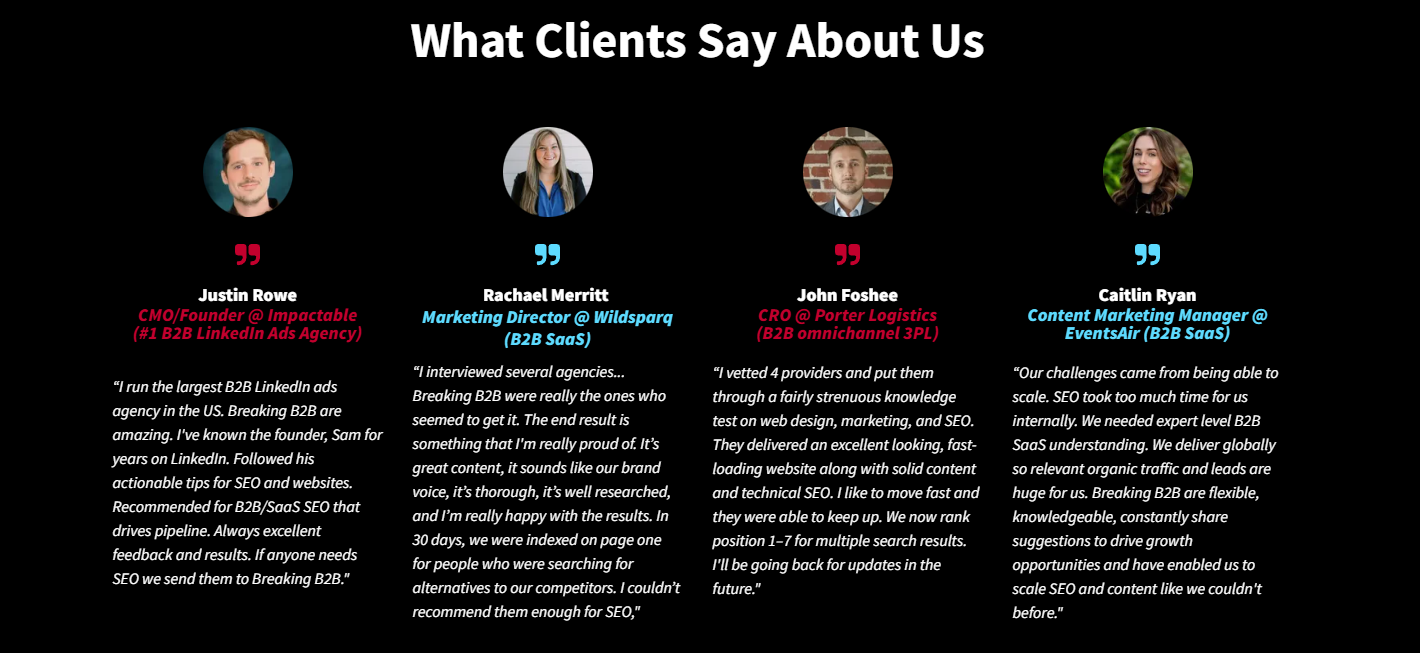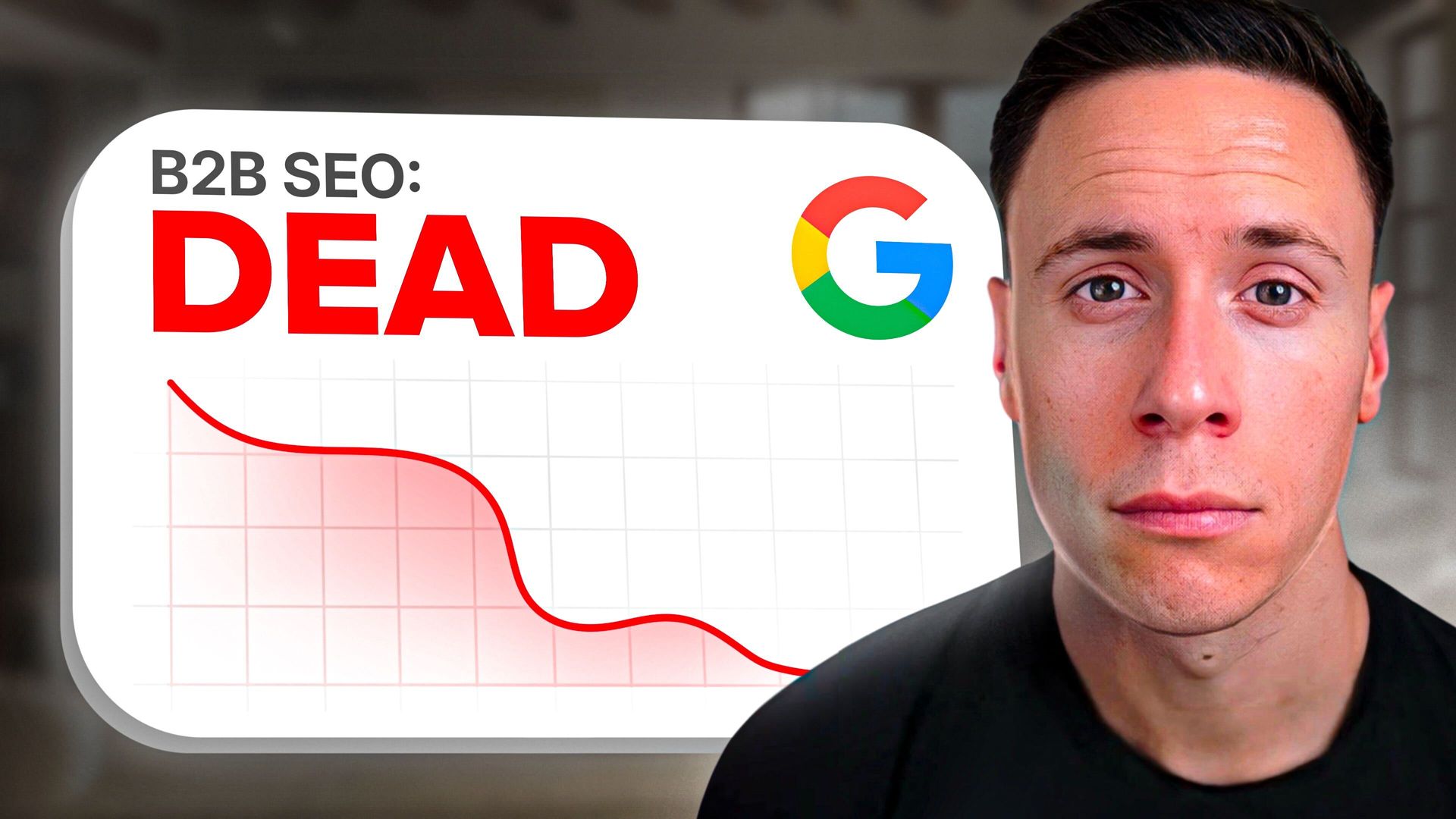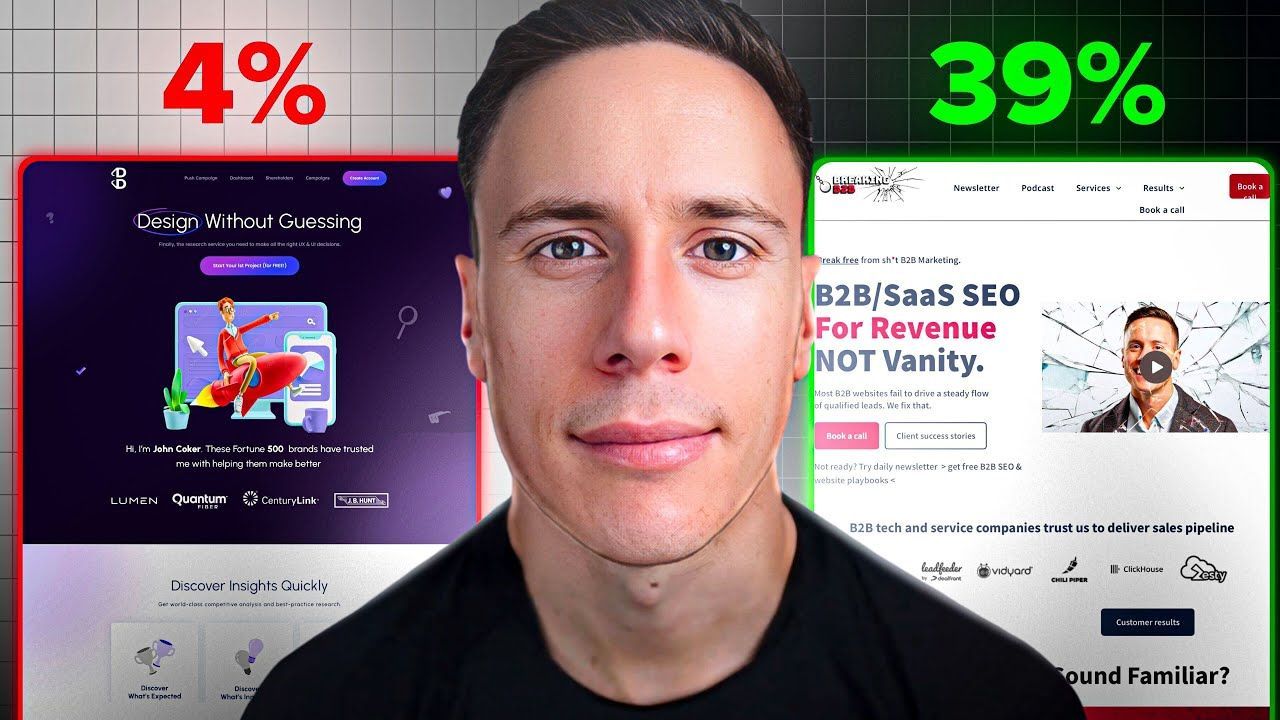Table of Contents
Ready To Grow Organic Pipeline & Revenue?
See if we can scale your organic pipeline from SEO as quick as 90 days.
Quick Summary
Struggling to Fix Technical Errors on Your SaaS Website?
Technical SEO can make or break your SaaS website’s visibility, performance, and user experience. Without the right steps in place, even the best products and services may go unnoticed by your target audience. Ensuring your site is optimized from a technical standpoint is essential for driving traffic, boosting rankings, and delivering seamless customer journeys.
In this Breaking B2B article, we’ll walk you through a step-by-step guide to mastering technical SEO for SaaS websites.
But first…
Why Listen to Us?
At Breaking B2B, we specialize in technical SEO for SaaS businesses. With years of B2B SEO experience, we've
helped SaaS companies improve site performance, boost rankings, and enhance user experience. Our proven approach ensures sustainable growth by optimizing the key technical elements that drive results. Trust our expertise to help your SaaS website thrive.

What is Technical SEO for SaaS Websites?
Technical SEO for SaaS involves optimizing the backend structure and performance of your website to ensure search engines can crawl, index, and rank it effectively. This includes tasks like improving site speed, enhancing mobile responsiveness, and fixing crawl errors.
Unlike traditional websites, SaaS platforms often include complex architectures, user portals, and dynamic content, making
technical SEO a critical component for achieving visibility. Proper optimization ensures a seamless experience for both search engines and users, increasing the likelihood of converting visitors into customers.
Why is Technical SEO Important for SaaS Websites?
- Improved Crawlability: Ensures search engines can access and understand your site’s structure and content.
- Faster Site Speed: Reduces load times, enhancing user experience and boosting rankings, especially for mobile users.
- Better User Experience: Optimized technical elements create a smooth, engaging experience that encourages visitors to stay.
- Enhanced Mobile Performance: Guarantees your SaaS site is fully functional and responsive across all devices.
- Competitive Edge: Strong technical SEO helps your SaaS business outperform competitors in search rankings and visibility.
Our Technical SEO Strategy for SaaS Websites
Step 1: Perform a Technical SEO Audit
Before diving into any optimization, we start with a thorough Technical SEO Audit. This is the foundation of any successful SEO strategy, as it allows us to identify and fix issues that may be preventing your website from ranking. The audit focuses on areas like website structure, crawlability, and mobile-friendliness, all of which are critical for SaaS businesses.
For example, we use tools like
Screaming Frog or
Ahrefs to crawl your site, checking for technical errors such as broken links, missing tags, or duplicate content. We also analyze the site’s
URL structure, ensuring it’s logical and easy to follow for both users and search engines.
Step 2: Optimize Site Speed
A fast-loading website is essential for both
user experience and
SEO. Google’s algorithms prioritize fast pages, especially for mobile users, and slow load times can lead to higher bounce rates. We focus on several tactics to
optimize site speed:
- Image Optimization: Large images can slow your site down. Tools like TinyPNG or ImageOptim help reduce image file sizes without sacrificing quality.
- Caching: By implementing proper caching, we ensure returning visitors don’t have to wait for the entire page to reload.
- Reducing Server Response Time: We review server performance using tools like GTmetrix and Google PageSpeed Insights to ensure it’s responsive and fast.
For SaaS websites, speed is especially crucial because users expect instant access to information about the software and its capabilities.
Step 3: Fix Crawlability and Indexing Issues
Crawlability is a key factor in SEO success. If search engines can't crawl your site properly, they won't be able to index and rank your pages. We ensure search engines can crawl your site by addressing common issues:
- Broken Links: We check for 404 errors using Ahrefs or Screaming Frog and implement proper redirects to maintain link equity.
- Improper Redirects: We fix any unnecessary or faulty redirects that might hinder search engines from properly crawling your content.
- robots.txt and Meta Tags: We make sure important pages aren’t blocked from crawling by reviewing your robots.txt file and meta robots tags.
-
These fixes help ensure that Google and other search engines can index your pages effectively, ensuring your SaaS content is visible to potential customers.
Step 4: Optimize URL Structure and Internal Linking
An intuitive and SEO-friendly URL structure is essential for both users and search engines. Clean, readable URLs make it easier for Google to understand the content of a page and for users to navigate your site. Here’s how we optimize:
- Short, Descriptive URLs: Instead of long, complex URLs with unnecessary characters, we make sure URLs are concise and relevant to the page’s content, e.g., www.yoursaas.com/product features rather than www.yoursaas.com/?id=12345.
- Internal Linking: We develop a robust internal linking strategy to help both search engines and users navigate the site more efficiently. By linking related content together, we improve crawlability and user experience while spreading link equity across the site.
Internal links also play a role in directing search engines to important pages, such as service descriptions or product features, which are critical for SaaS SEO. Tools like
Ahrefs and
Screaming Frog can help us monitor and optimize internal linking to ensure a well-connected site structure.
Step 5: Improve Structured Data and Schema Markup
Structured data (or schema markup) helps search engines understand the content of your pages more easily, improving visibility in rich search results. For SaaS companies, specific types of schema can be especially beneficial:
- Product Schema: For software products, using product schema allows Google to understand the features, pricing, and availability of your product.
- Review Schema: If you have customer reviews, implementing Review Schema can enhance your search listings with star ratings, which can increase CTR.
- FAQ Schema: If you provide an FAQ page, FAQ Schema can allow Google to display questions and answers directly in search results, improving visibility.
-
We implement schema markup using
Google’s Structured Data Markup Helper and validate it with
Google’s Rich Results Test to ensure it's correctly formatted and eligible for rich results.
Step 6: Address Duplicate Content Issues
Duplicate content can confuse search engines, leading to ranking issues. For SaaS websites, this often occurs when similar content is accessible via multiple URLs, such as a blog post or product description appearing under different categories.
To resolve this, we use tools like Copyscape and Screaming Frog to identify duplicate content across your site. We then implement solutions like:
- Canonical Tags: We add canonical tags to tell search engines which version of a page is the primary one.
- Noindex Tags: For pages that should not be indexed (such as certain duplicates or internal search results), we add noindex tags to prevent search engines from indexing them.
-
By managing duplicate content properly, we ensure that search engines focus on the most relevant pages, helping your SaaS website rank better.
Step 7: Set Up Google Search Console and Analytics
Finally, tracking and monitoring your technical SEO progress is crucial. Setting up Google Search Console (GSC) and Google Analytics provides valuable insights into how your website performs in search results and how users interact with it.
- Google Search Console: We use GSC to monitor crawl errors, see which pages are indexed, and track keyword performance. It also allows us to submit sitemaps and check for manual penalties.
- Google Analytics: By setting up GA, we can track user behavior, including bounce rates, session duration, and conversion rates. This helps us understand the effectiveness of our SEO efforts and refine strategies accordingly.
Together, GSC and Analytics give us the data we need to continually optimize and improve your SaaS website’s technical SEO performance.
Let Breaking B2B Handle Your SaaS Technical SEO
Effective technical SEO is key to improving your SaaS website’s visibility and performance. From optimizing site speed to addressing crawlability issues and enhancing mobile-friendliness, a well-rounded strategy is essential for growth.
Overwhelmed by the complexities? Let Breaking B2B manage your technical SEO. With proven success helping SaaS businesses like Checkwriters and Wildsparq, we tailor strategies that deliver lasting results.
Ready to boost your SaaS website’s SEO?
Contact Breaking B2B today to get started!







